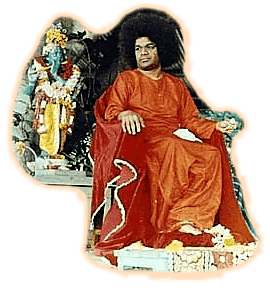
|
Preface
|
|

|
|
Chapter
1-6: KARMA YOGA, THE YOGA OF PERFECT ACTION
The individual soul realizes itself the Original Soul through
action.
|
|
|

|
Chapter 1 - The Yoga of Dejection
'On the confrontation with the necessity to fight' - Arjuna Vishādha Yoga
|

|
Chapter 2a - The Yoga of Analytic
Knowledge
'On the
knowledge of the soul' - Sānkhya Yoga
|

|
Chapter 2b - The Yoga of Analytic
Knowledge
'On the
results of labor' - Sānkhya
Yoga
|

|
Chapter 3 - The Yoga of Action
'On mastering the intelligence' - Karma Yoga
|

|
Chapter 4 - The Yoga of Knowledge
'On
sacrificing' - J˝āna
Yoga
|

|
Chapter 5 - The Yoga of Work in
Detachment
'About
the reality of detachment' - Karma Sannyāsa Yoga
|

|
Chapter 6 - The Yoga of Meditation
'About the nature of yoga and reincarnation' - ātmā Samyamana Yoga
|
|

|
|
Chapter
7-12: BHAKTI YOGA, THE YOGA OF DEVOTION
The individual soul realizes itself the Original Soul through devotion
|
|
|

|
Chapter 7 - The Yoga of Wisdom
'About knowing and realizing oneself' - Vij˝āna Yoga
|

|
Chapter 8 - The Yoga of the Imperishable
Spirit
'About salvation' - Akshara Parabrahma Yoga
|

|
Chapter 9 - The Yoga of Confidentiality
'On the confidential of knowledge' - Rāja Vidya Rāja Guhya Yoga
|

|
Chapter 10 - The Yoga of His Opulence
'On His
Identity' - Vibhuti
Yoga
|

|
Chapter 11 - The Yoga of the Universal Form
'On the confrontation with the complete of His reality' - Vishvarūpa Yoga
|

|
Chapter 12 - The Yoga of Devotion
'On fixing oneself on the ultimate of perfection' - Bhakti Yoga
|
|

|
|
Chapter
13-18: BHAKTI YOGA, THE YOGA OF DEVOTION
The individual soul realizes itself the Original Soul through knowledge
|
|
|

|
Chapter 13 - The Yoga of Discrimination
'On the
difference between the knower and the known' - Kshetra Kshetraj˝a Yoga
|

|
Chapter 14 - The Yoga of the Three Modes of Nature
'On the
inherent qualities of material nature' - Gunatraya Vibhāga Yoga
|

|
Chapter 15 - The Yoga of the Supreme Person
'About
the realization of the characteristics, virtue and glory of God' - Purushottamah Prāpti Yoga
|

|
Chapter 16 - The Yoga of Discriminating the qualities of the
enlightened and the unenlightened
'About the qualities of the divine and the godlesś - Dhaivāsura Sampad Vibhāga
Yoga
|

|
Chapter 17 - The Yoga of the Threefold Division of Faith
'About
the nature of each type of food intake, austerity and sacrifice' - Sraddātharaya Vibhāga Yoga
|

|
Chapter 18a - The Yoga of liberation through Renunciation
'About renunciation and its threefold nature' - Moksha Sannyāsa Yoga
|

|
Chapter 18b - The Yoga of liberation through Renunciation
'About renunciation (its threefold nature) and its service with the
divisions of society as the ultimate of liberation' - Moksha Sannyāsa Yoga
|
|
|

|
Quotes on Lord Krishna by Bhagavān
Baba
|

|
Other Links on Bhagavad-Gītā
|

|
Treasury
|


